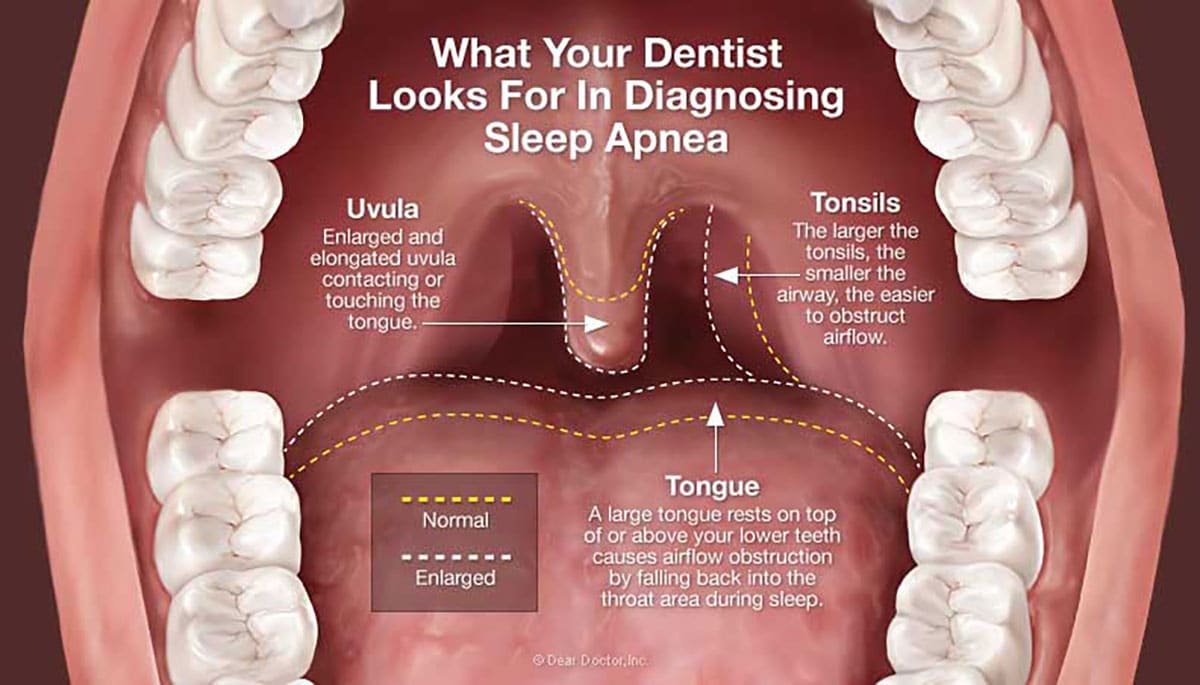Sleep Apnea
Sleep apnea (OSA) is a sleep disorder condition where the individual suffers from low oxygen levels in their blood, which disrupts their sleep. Obstructive sleep apnea involves the tongue being pulled towards the rear of the throat, blocking the patient’s upper airway and stopping the airflow. When enough oxygen is prevented from reaching the brain, the sufferer will wake up, at least partially, and clear the blockage. This starts the air flowing correctly but will prevent the individual from getting a good night’s sleep.

The consistently low level of oxygen can have pretty severe consequences on the cardiovascular system. The lack of sleep can cause sufferers to lose concentration during the day and feel nearly constantly sleepy. It can even lead to depression.
Upper airway resistance syndrome (UARS) refers to a less serious blockage, but the symptoms are the same. The key to starting treatment is to understand and recognize the problem, which can be difficult because it is a sleeping disorder, and thus, many sufferers are unaware that they have it.
Treating Sleep Apnea
Consulting a doctor will help you explore your options; both maxillofacial and oral surgeons can provide potential treatment options. To find the best treatment for you, your doctor will need to examine your maxillofacial area. They will also need your medical history. Your levels of blockage will be assessed using cephalometric analysis or skull x-rays. Sometimes, a nasopharyngeal examination will be completed with a fibre-optic camera.
Your sleep may need to be investigated at a sleep clinic (overnight monitoring) to determine the problem accurately.
There are a few available treatment choices:
Non-surgical options to treat sleep apnea
- CPAP machine
- Oral Appliance Therapy (OAT)
- Lifestyle changes – lose weight, smoking cessation, sleep training
Surgical options to treat sleep apnea
- Tonsillectomy and/or Adenoidectomy
- Uvulopalatopharyngoplasty (UPPP)
- Maxillomandibular Advancement (MMA)
- Nasal Surgery
- Genioglossus Advancement (GA)
- Tracheostomy
A surgical option known as a uvulopalatopharyngoplasty (UPPP) is implemented on the rear of the soft section of the palate and throat.
Another similar surgery, uvulopalatoplasty (LAUPP), can be completed using a laser. In some other instances, a radiofrequency probe is used to narrow the soft palate.
These surgical procedures tend to be completed while the patient is sedated with an IV in our office.
In some cases, the bones on the lower and upper jaws may be reduced to make the airway larger. This is known as orthognathic surgery and is completed under anesthesia in a hospital setting. It also requires the patient to stay one or two nights at the hospital to recover before being discharged.
Check out our in-depth sleep apnea article for more information about how our dentists and oral surgeons can help treat sleep apnea.
Sleep apnea is a severe condition that demands attention to detail. The good news is that there are a variety of treatments available, and most medical plans cover both the diagnosis as well as the treatment.
Martindale Dental provides both general and specialty dentistry under one roof. For more than 20 years, our dentists have been advocates for their patient’s oral health care needs.
Our dental offices are conveniently located throughout the GTA in Hamilton (Jackson Square), and St. Catharines, Ontario. We offer convenient appointments before or after work & on weekends.
Martindale Dental provides both general and specialty dentistry under one roof. For more than 20 years, our dentists have been advocates for their patient’s oral health care needs.
Our dental offices are conveniently located throughout the GTA in Hamilton (Jackson Square), and St. Catharines, Ontario. We offer convenient appointments before or after work & on weekends.
